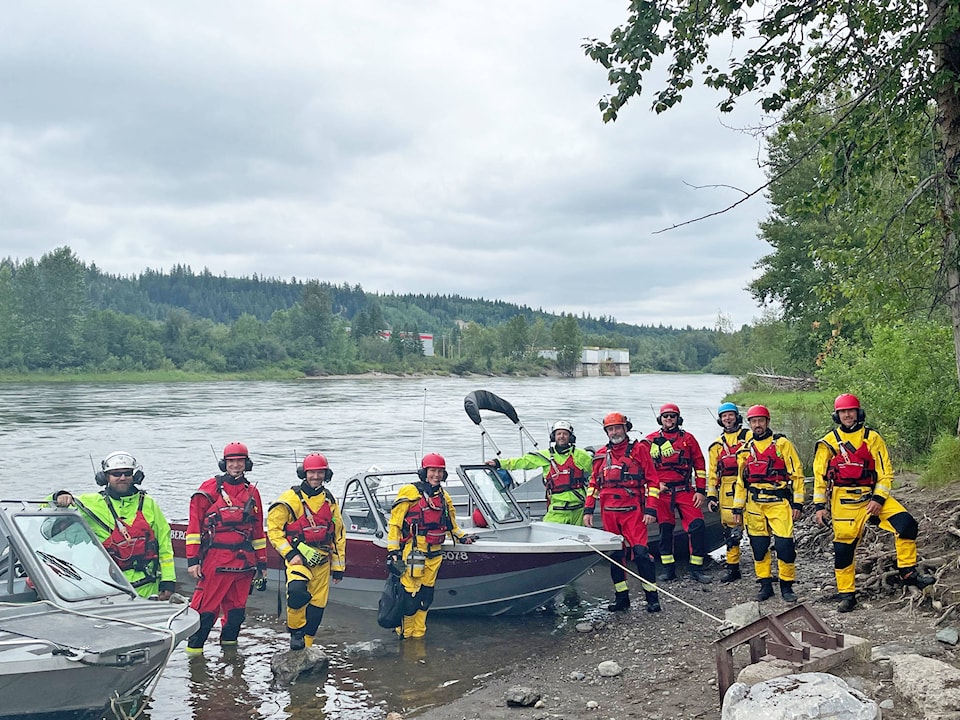From Prince George’s Cottonwood Park to Vanderhoof’s Riverside Park, the Nechako Valley Search and Rescue (NVSAR) traveled over 150 kilometers by jetboat on the Nechako River to hone in on their swift water rescue skills.
A total of 12 swift water team members took to the waters Sunday, July 18.
“This spring, we ran a recertification search water rescue technician course,” said NVSAR president and search manager Christopher Walker.
“Part of that is we need to maintain a certain amount of hours for training, and we like to every year to go to every location where we are responsible for responding to swift water calls. So it was really more of a day just familiarizing ourselves with the area we respond to and getting the new swift water rescue technicians familiar with it as well.”
READ MORE: Pilot sustains minor injuries after crash on west end of Fraser Lake
Some of those areas include the Stellako River, Stuart Lake and Nechako River.
Walker said NVSAR has responded to a number of swift water rescue calls over the years.
Just a short time ago, they received a call of an individual who had jumped off the bridge in Vanderhoof.
In 2020, NVSAR was able to rescue a kayaker who got stuck and pinned on a log between the bridges on Highway 27 and in Vanderhoof, Walker said. Last year NVSAR was also on the Stellako River searching for a missing person.
“We’re lucky enough that it’s not extremely frequent, which we’re glad too,” Walker said, noting swift water rescue technicians need to be recertified every three years.
“In between that, we have to maintain high-level training because swift water is an extremely dangerous place to be,” he added. “It can be very technical.”
Through the use of IPads, members on Sunday also mapped out rapids, points of interest, areas of frequent log jams and locations of roads where an NVSAR team could be deployed.
Walker said while the Nechako River in Vanderhoof appears calm on the surface, looks can be deceiving.
“It can be very dangerous because it is what is underneath the water,” he said.
“So knowing how to properly swim in swift water, go through rapids, proper breathing techniques, using rope to throw a bag to a subject so we can pull them out, using jet boats and how to properly position it in rapid water—it’s a huge complex operation, but we train so that we’re safe when we actually have to go out and do it.”
NVSAR has three jet boats at their disposal for swift water rescue missions run by a trained operator who is also a swift water rescue technician. Each rescue technician is also equipped with a full PPE and supply kit, worth around $2,000.
A day before the swift water rescue practice 12 NVSAR members joined Prince George Search and Rescue in hover exit recertification with Yellowhead Helicopters.
Walker said that hover exit maneuvers in which persons disembark or embark onto a helicopter while it remains above the ground is not easy.
Weight must be evenly balanced and carefully shifted in a systematic process.
“We do everything possible to make sure we get the helicopter to land because it is a risk, and we’re all about mitigating risk.”
Do you have a comment about this story? email:
rebecca.dyok@wltribune.com
Like us on Facebook and follow us on Twitter.
